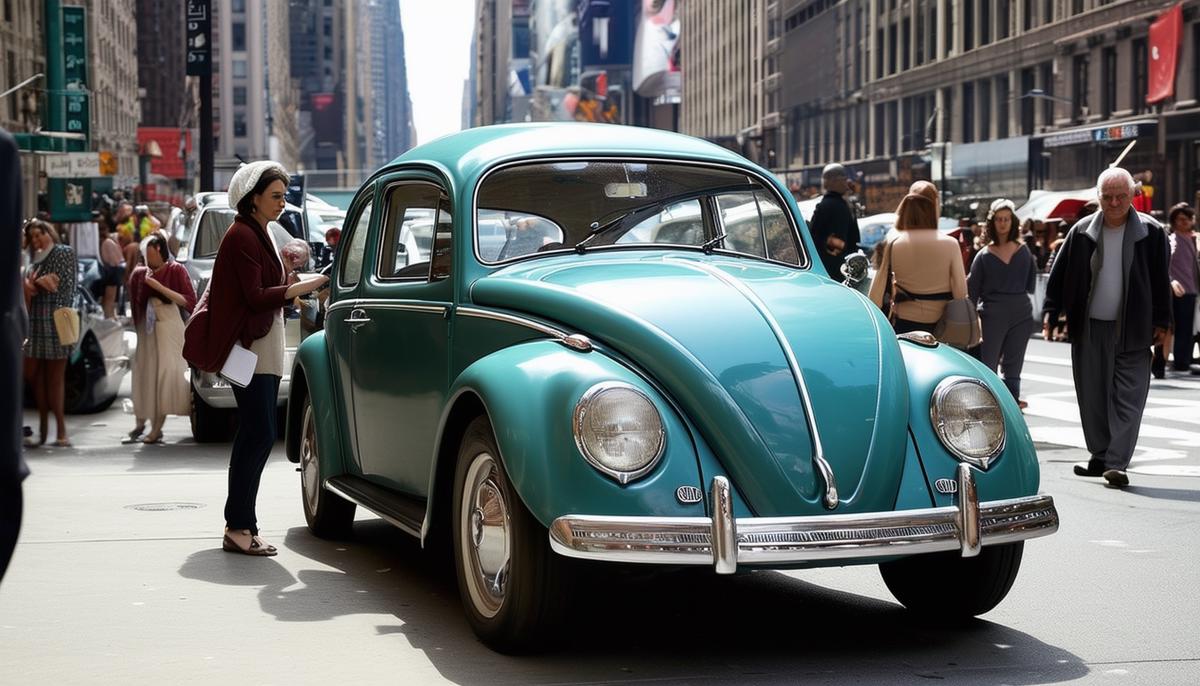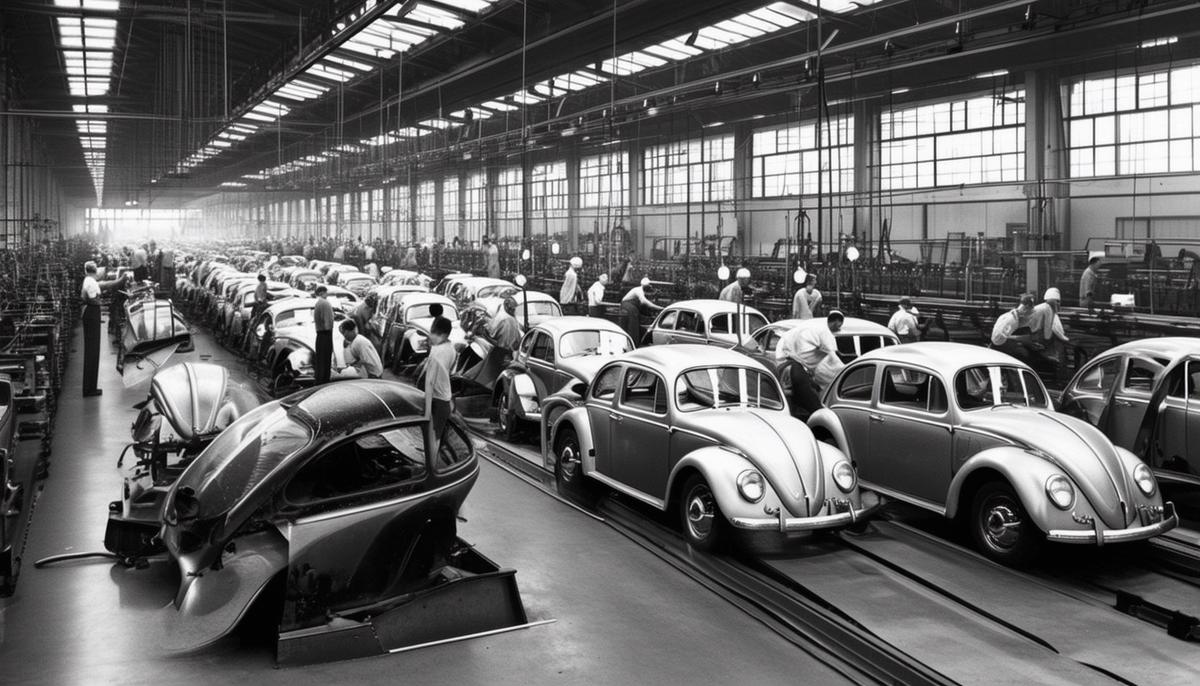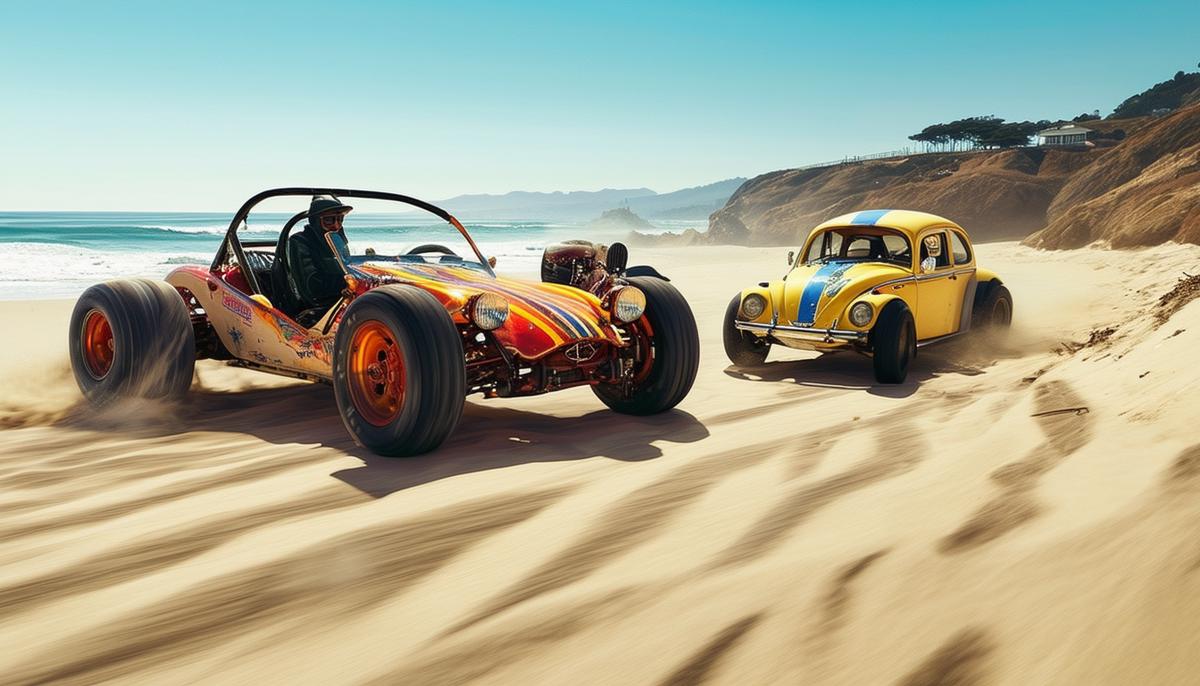Arrival of the Volkswagen Beetle in America
The Volkswagen Beetle first rolled onto American soil in January 1949, catching curious glances in New York. Ben Pon, a Dutch car dealer, brought these quirky machines to the U.S., facing an uphill battle against lingering anti-German sentiment.
Despite its rocky start, the Beetle's charm was undeniable. Enter Max Hoffman, a New Yorker with business savvy. By 1950, he'd woven the Beetle into America's car scene, pairing it with flashy European imports. Dealerships, eager for Jaguars and Porsches, found the Beetles tagging along for the ride.
By 1955, the Beetle's hum had become a familiar sound across the nation. Volkswagen of America set up shop, and the car zoomed into everyday conversations and culture. Come 1960, over half a million Beetles cruised U.S. roads, a far cry from its humble beginnings.

Evolution of Volkswagen Beetle Production
Let's flip back to post-World War II Germany, where the Beetle's story really revs up. Picture a battered riverside factory, pulsing with potential. The British occupation forces, led by Major Ivan Hirst, breathed new life into Volkswagen's Wolfsburg plant. Under his guidance, production slowly resumed, despite constant repairs and shortages.
Enter Heinz Nordhoff, who cranked up Volkswagen's export strategy. He aimed to get Beetles into driveways across Europe and beyond, even eyeing America despite post-war hurdles.
As the 60s rolled in, the Beetle kept pace with the times. Volkswagen tinkered and tuned, making the ride smoother and the joyrides longer, all while keeping that quirky charm intact. The Beetle wasn't just surviving; it was thriving, becoming a true icon on wheels.

Cultural Impact and Legacy of the Beetle
In the groovy 1960s, the Volkswagen Beetle became more than just a car. It was a ticket to freedom, offering affordable rides to the masses. But it didn't stop there – the Beetle became a canvas for automotive dreams.
Cue the Baja Bug, born in the sands of Southern California. Gearheads lifted its suspension and beefed up the engine, turning the humble Bug into an off-road beast. Then there was the Meyers Manx dune buggy, the brainchild of Bruce Meyers. It took Beetle guts and turned them into beach-ready fun machines, embodying the free spirit of the era.
A vibrant community blossomed around the Beetle. Enthusiasts swapped stories and parts, turning garages into hubs of innovation. The Beetle wasn't just metal; it was a lifestyle, an invite to the cool club.
As decades rolled on, the Beetle kept its groove. It inspired countless tales of individuality and expression, becoming a cultural beacon that celebrated the quirky and unique. The Beetle wasn't just a car; it was a piece of magic that promised to keep on dreaming.

The Volkswagen Beetle's journey is a testament to resilience and charm, capturing hearts across generations. Its story of transformation from a humble vehicle to an icon serves as a reminder that even the most unassuming beginnings can lead to enduring legacies.
- Hagerty. Volkswagen Beetle: Buying guide and review (1961-1970). 2024.
- Volkswagen of America. 75 Years of Volkswagen in America. 2024.
- MotorTrend. The Meyers Manx Is Back With the "Old Red" Kit for Air-Cooled VWs. 2024.
